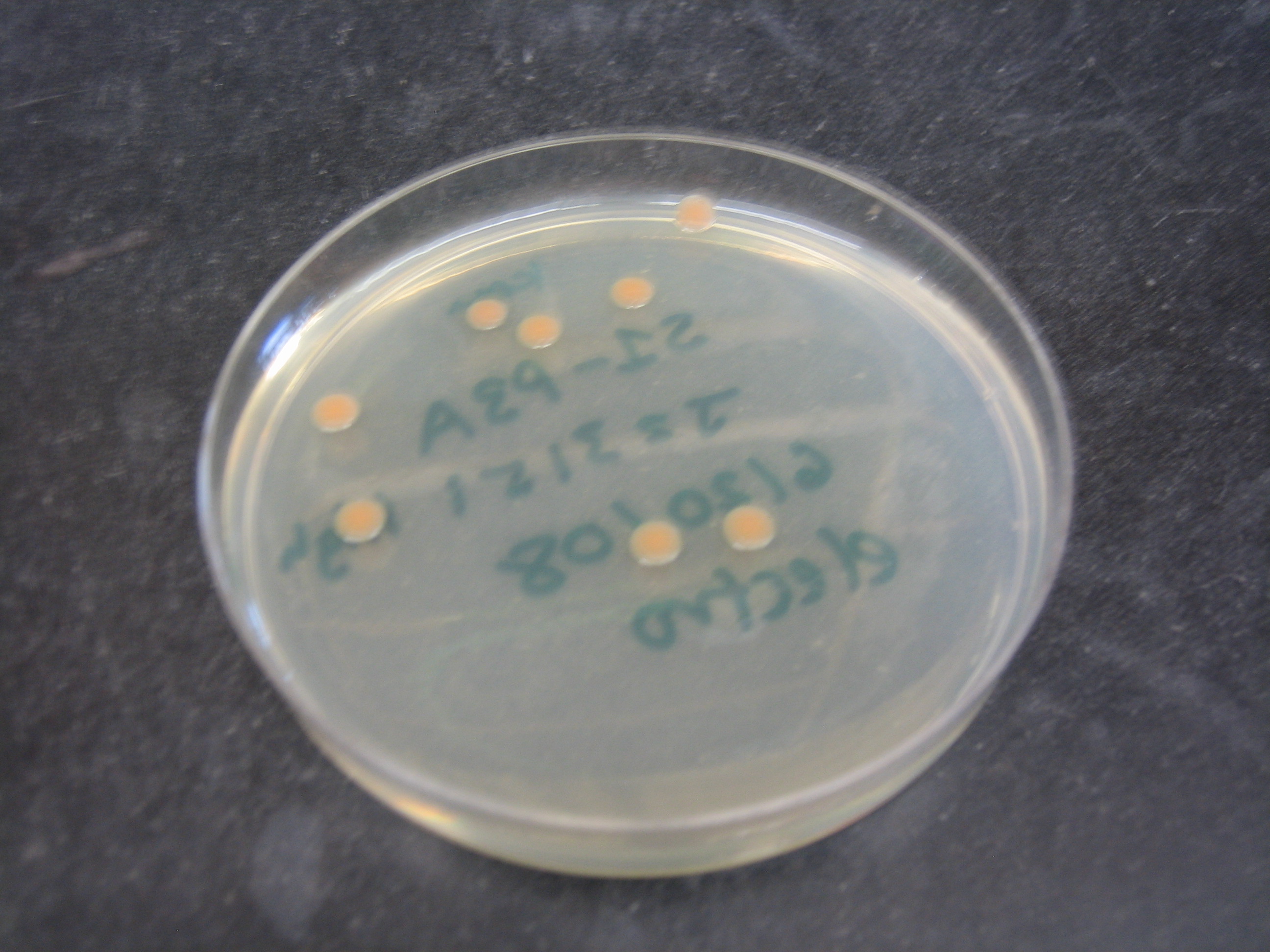Team:Harvard/Shewie
From 2008.igem.org
(→Organism) |
(→Shewanella oneidensis MR-1) |
||
| Line 59: | Line 59: | ||
=Organism= | =Organism= | ||
Most of our work this summer is founded upon the diverse metabolism of the bacterium ''Shewanella oneidensis MR-1''. Throughout the summer, we came to better understand how to work with this organism, and we hope our findings will help establish ''S. oneidensis'' as a interesting chasis for synthetic biology. | Most of our work this summer is founded upon the diverse metabolism of the bacterium ''Shewanella oneidensis MR-1''. Throughout the summer, we came to better understand how to work with this organism, and we hope our findings will help establish ''S. oneidensis'' as a interesting chasis for synthetic biology. | ||
| - | ==''Shewanella oneidensis MR-1''== | + | ==''Shewanella oneidensis MR-1'': An Introduction== |
This summer we worked with ''Shewanella oneidensis MR-1'', a gram-negative facultative anaerobe (Myers and Myers 1997). Under anaerobic conditions, it reduces a number of electron acceptors such as MN(IV). This ability can be harnessed by microbial fuel cells (MFC) to produce an electric current (Bretschger et al. 2007). When the bacteria are grown anaerobically in the anode chamber of an MFC, they release electrons onto the electrode, creating an electrical current. These diverse respiratory capabilities require a complex electron transport systems, including 39 c-type cytochromes (Heidelberg et al. 2002). These interesting characteristics of ''S. oneidensis MR-1'' make it an important model organism for both studies of bioremediation as well as biotechnology applications. | This summer we worked with ''Shewanella oneidensis MR-1'', a gram-negative facultative anaerobe (Myers and Myers 1997). Under anaerobic conditions, it reduces a number of electron acceptors such as MN(IV). This ability can be harnessed by microbial fuel cells (MFC) to produce an electric current (Bretschger et al. 2007). When the bacteria are grown anaerobically in the anode chamber of an MFC, they release electrons onto the electrode, creating an electrical current. These diverse respiratory capabilities require a complex electron transport systems, including 39 c-type cytochromes (Heidelberg et al. 2002). These interesting characteristics of ''S. oneidensis MR-1'' make it an important model organism for both studies of bioremediation as well as biotechnology applications. | ||
Revision as of 01:22, 29 October 2008
|
|
 "
"

